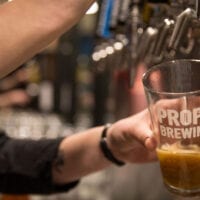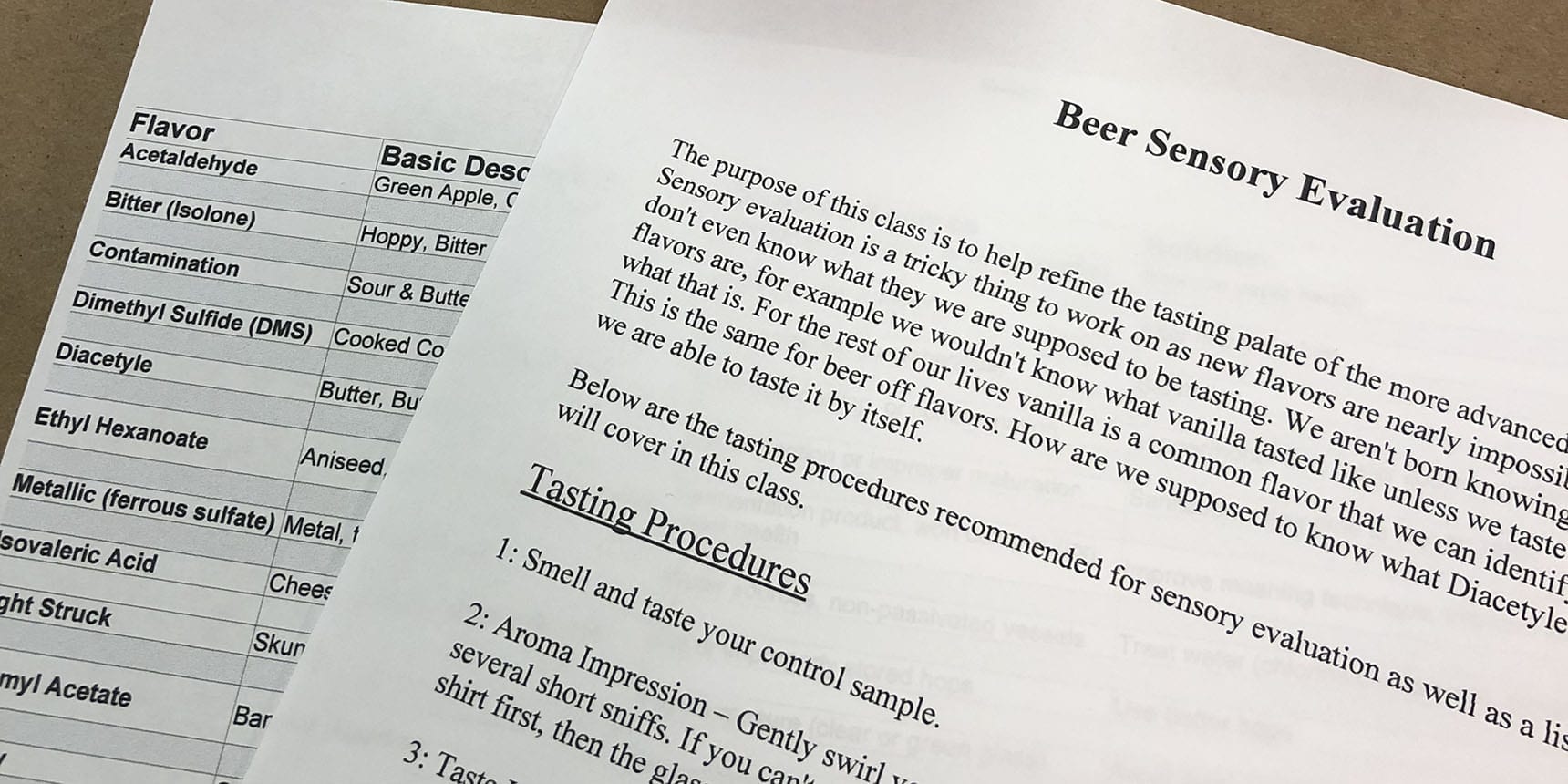
To truly enjoy beer, it’s important to fine tune your senses. Sight, smell, and taste all play a part in the overall beer-drinking experience. It’s fun (and helpful) to identify pleasant aromas and flavors — citrus, pine, chocolate — but that’s only half the game. The other half is identifying, and then describing, off flavors.
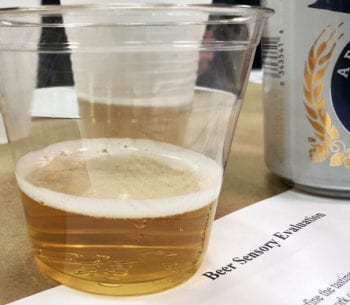 These are the characteristics brewers and beer drinkers dread. It’s a buttery flavor/slickness (Diacetyl) or a vegetal aroma/flavor (Dimethyl Sulfide). It’s metallic or papery or skunky.
These are the characteristics brewers and beer drinkers dread. It’s a buttery flavor/slickness (Diacetyl) or a vegetal aroma/flavor (Dimethyl Sulfide). It’s metallic or papery or skunky.
Whatever it is, you don’t want it in your beer. But how do you train your palate to not only pick up on such flavors, but also to describe the specific aroma and taste characteristics?
I attended a Beer Sensory Evaluation class at Salt City Brew Supply (SCBS) to get the scoop. Held occasionally (keep an eye on its Facebook for upcoming classes), these two-hour hands-on seminars introduce a dozen common off flavors into beer drinkers’ tasting arsenals.
After all, just as we don’t know what, say, an orange tastes like until we are told what it is and taste one, it’s difficult to pick out an off flavor if we haven’t experienced it by itself.
“We aren’t born knowing what different flavors are,” says Cody McKendrick, co-owner of SCBS. “Being able to pick out what’s good or bad individually really helps the overall tasting experience.”
Off Flavors: Sensory Evaluation
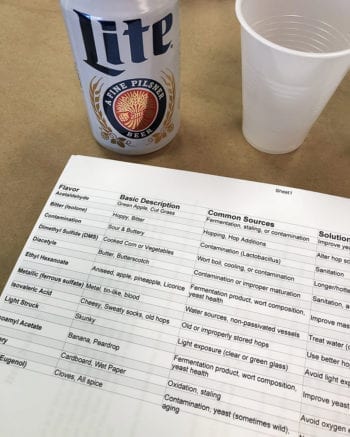 In a recent class, McKendrick played the part of mad scientist and doctored Miller Lite a dozen different ways. He used the Siebel Institute of Technology’s Regular Sensory Training Kit to “spike” our control beer.
In a recent class, McKendrick played the part of mad scientist and doctored Miller Lite a dozen different ways. He used the Siebel Institute of Technology’s Regular Sensory Training Kit to “spike” our control beer.
We were given a six-step “tasting procedure.” It started with smelling and tasting the control sample (without an off flavor added). From there, it’s time to swirl, smell, and taste the spiked beer.
A cheat sheet provided basic descriptions of each off flavor, which definitely helped in identifying flaws. It also explained common sources of the off flavor (contamination, oxidation, fermentation issues, etc.), as well as ways to prevent the flaw in the future.
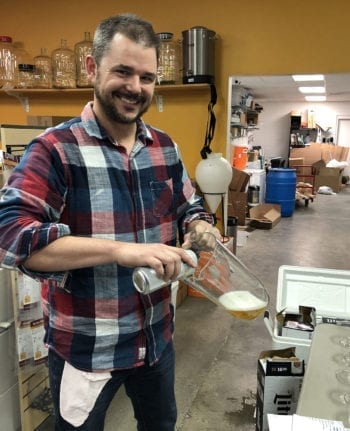
I’ll be honest: I identified perhaps three of the 12 off flavors correctly on my own. But a roundtable discussion after each sample helped my senses of smell and taste eventually zero in on the specific flaw.
Previously, I took an online Beer Tasting Mastery course (read more: part 1 and part 2). While that one didn’t focus on off flavors, it did open my eyes to a world of fruits and spices commonly associated with various styles of beer. I’d never tasted certain spices by themselves. And a few of the fruits I tasted for the first time. Up until that point, I’d generally classify beers as “hoppy” or “malty” or “citrusy.”
Through that course, I greatly expanded my vocabulary in talking about malt, hops, and yeast characteristics. This most-recent course helped me build a vocabulary for unwanted beer flavors.
McKendrick says he spent the first part of his beer-drinking life knowing he liked craft beer. But he didn’t really know what he liked about it.
“To the point I was in my mid-20s when people told me ‘this beer is hoppy’ and I don’t know what that really means,” he says. “It tastes like it tastes.”
Helping the Beer Judging Community
Our class took place weeks before a scheduled Beer Judge Certification Program (BJCP) exam. It’s one reason Salt City Brew Supply held the seminar.
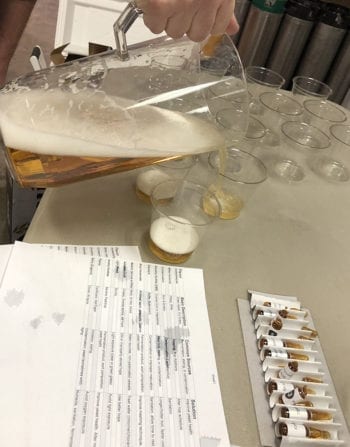 Identifying flavors and characteristics is important. But it doesn’t do much good, for beer judges especially, if you can’t describe what you’re smelling or tasting.
Identifying flavors and characteristics is important. But it doesn’t do much good, for beer judges especially, if you can’t describe what you’re smelling or tasting.
“You could have a really good palate but if you don’t have the vocabulary to communicate the good and the bad and how to fix it, then you’re not giving people constructive feedback,” McKendrick says.
It’s all part of SCBS’s mission to engage with the beer community and promote homebrewing.
“We want to help people make better beer,” says McKendrick, who’s homebrewed for about 12 years and who opened the shop with Ross Metzger in 2011. “Whatever we can do to make their experience better, to keep them excited about brewing.”
